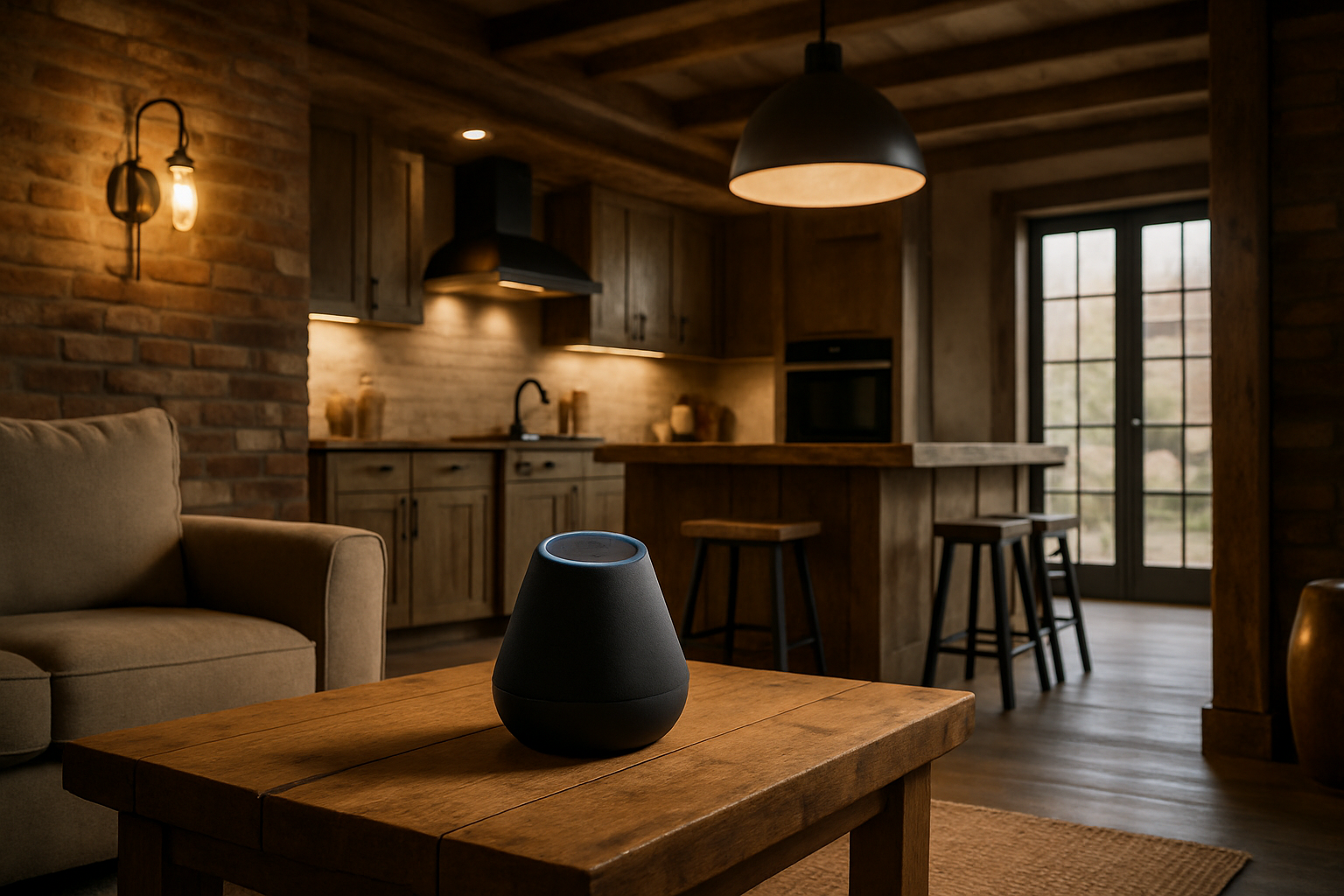Rustic Futurism: Merging Country Charm with Cutting-Edge Design
Picture a farmhouse kitchen where sleek, voice-activated appliances nestle comfortably alongside weathered wood beams. Imagine a living room where a holographic fireplace flickers beneath exposed brick walls. Welcome to the world of Rustic Futurism, a bold new design trend that's capturing the imagination of homeowners and interior designers alike.

The Origins of Rustic Futurism
Rustic Futurism didn’t emerge overnight. It’s the result of a gradual evolution in design thinking, born from the collision of two seemingly contradictory aesthetics. On one side, we have the enduring appeal of rustic design, with its emphasis on natural materials, handcrafted elements, and a connection to simpler times. On the other, we have the relentless march of technology, constantly pushing the boundaries of what’s possible in our homes.
The trend began to take shape in the late 2010s, as homeowners increasingly sought ways to incorporate smart home technology without sacrificing the cozy, lived-in feel of their spaces. Designers and architects started experimenting with ways to seamlessly blend these two worlds, and Rustic Futurism was born.
Key Elements of Rustic Futurism
At its core, Rustic Futurism is about contrast and balance. It’s the juxtaposition of rough and smooth, old and new, analog and digital. Here are some key elements that define this exciting new style:
-
Natural Materials Meet High-Tech Surfaces: Think reclaimed wood paired with sleek metal or glass. A dining table made from centuries-old barn wood might be topped with an interactive touchscreen surface.
-
Smart Technology in Disguise: In Rustic Futurism, technology is integrated, not showcased. Smart home features are cleverly concealed within rustic elements, like a vintage mirror that doubles as a digital display.
-
Adaptive Lighting: Cutting-edge lighting systems that mimic natural daylight cycles are often paired with Edison bulbs or wrought-iron fixtures.
-
Textural Contrasts: Rough-hewn stone walls might be accented with smooth, glossy panels that house home automation controls.
-
Reimagined Traditional Forms: Classic furniture shapes are updated with futuristic materials or embedded with technology, like a wingback chair upholstered in self-cleaning fabric.
The Psychology Behind Rustic Futurism
The appeal of Rustic Futurism goes beyond mere aesthetics. This design trend taps into deep-seated psychological needs and desires. In a world that often feels chaotic and disconnected, Rustic Futurism offers a sense of groundedness and authenticity through its use of natural materials and traditional craftsmanship.
At the same time, it acknowledges our increasing reliance on technology and our desire for efficiency and convenience. By seamlessly integrating these two aspects, Rustic Futurism creates spaces that feel both comforting and empowering.
Moreover, this style speaks to our growing awareness of sustainability issues. By combining long-lasting, often reclaimed materials with energy-efficient smart technology, Rustic Futurism offers a vision of a home that’s both environmentally responsible and forward-thinking.
Implementing Rustic Futurism in Your Home
Embracing Rustic Futurism doesn’t mean you need to completely overhaul your space. Here are some ways to incorporate elements of this trend into your existing decor:
-
Start Small: Begin by introducing small touches of technology into rustic settings. A smart speaker disguised as a vintage radio, for instance, or a digital photo frame designed to look like a weathered picture frame.
-
Focus on Lighting: Lighting is an easy way to blend rustic and futuristic elements. Consider installing smart bulbs in antique fixtures, or use modern track lighting to highlight rustic architectural features.
-
Upgrade Your Furniture: Look for pieces that combine traditional forms with modern functionality. A farmhouse-style dining table with built-in charging ports, for example.
-
Play with Textures: Introduce contrasting textures to create visual interest. Pair rough stone or wood with sleek metal or glass surfaces.
-
Hide the Tech: Where possible, conceal modern technology within rustic elements. A barn door could slide back to reveal a state-of-the-art home entertainment system.
The Future of Rustic Futurism
As technology continues to advance and our homes become increasingly connected, the principles of Rustic Futurism are likely to evolve as well. We may see the development of new materials that mimic natural textures while offering enhanced functionality, or advancements in augmented reality that allow us to overlay digital information onto rustic surfaces.
One exciting possibility is the integration of artificial intelligence into Rustic Futurist designs. Imagine a home that not only looks rustic and feels high-tech but actually learns and adapts to your preferences over time, adjusting lighting, temperature, and even the positioning of furniture to suit your needs.
Embracing the Best of Both Worlds
Rustic Futurism is more than just a design trend; it’s a philosophy that celebrates the best of both the past and the future. It reminds us that progress doesn’t have to mean abandoning tradition, and that comfort and cutting-edge technology can coexist harmoniously.
As we move forward into an increasingly digital age, Rustic Futurism offers a vision of home that is at once grounding and inspiring. It allows us to honor the craftsmanship and materials of the past while embracing the innovations that will shape our future. In doing so, it creates spaces that are not just beautiful and functional, but truly timeless.





